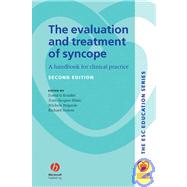
Note: Supplemental materials are not guaranteed with Rental or Used book purchases.
Purchase Benefits
Looking to rent a book? Rent The Evaluation and Treatment of Syncope A Handbook for Clinical Practice [ISBN: 9781405140300] for the semester, quarter, and short term or search our site for other textbooks by Benditt, David G.; Blanc, Jean-Jacques; Brignole, Michele; Sutton, Richard. Renting a textbook can save you up to 90% from the cost of buying.
David G Benditt, M.D. was born in Winnipeg, Canada. He received a B.Sc. degree in Electrical Engineering and an MD degree from the University of Manitoba. Following completion of postgraduate training in Internal Medicine, he moved to Duke University Medical Center in Durham, North Carolina where he completed a fellowship training in cardiology and cardiac electrophysiology. Thereafter, Dr Benditt joined the faculty of the Cardiovascular Division in the Dept of Medicine at the University of Minnesota where he established its training and research program in clinical cardiac electrophysiology. Dr. Benditt is currently Professor of Medicine and Co-director of the Cardiac Arrhythmia Center at the University of Minnesota in Minneapolis. He has been an Established Investigator of the American Heart Association, and President of both the American Heart Association-Minnesota Affiliate and the North American Society for Pacing and Electrophysiology. Dr Benditt has recently been honored with the Pioneer in Pacing and Electrophysiology Award of the Heart Rhythm Society. He is a Fellow of both the American College of Cardiology, the Royal College of Physicians and Surgeons of Canada, and the Heart Rhythm Society.
Jean-Jacques Blanc, MD. FESC
Professor of Cardiology. Chief Department Cardiology, Brest University. France; Member of the Task Force on Syncope of the European Society of Cardiology.
Michele Brignole, MD, FESC
Chief of Cardiology Department. Ospedale Riuniti. Lavagna. Italy; Chairman of the Task Force on Syncope of the European Society of Cardiology.
| List of contributors, | viii | ||||
| Introduction, | xiii | ||||
| Section one: Definition, pathophysiology, epidemiology | |||||
|
3 | (7) | |||
|
|||||
|
10 | (6) | |||
|
|||||
|
16 | (13) | |||
|
|||||
|
29 | (11) | |||
|
|||||
|
40 | (7) | |||
|
|||||
| Section two: Syncope evaluation strategy | |||||
|
47 | (7) | |||
|
|||||
|
54 | (9) | |||
|
|||||
|
63 | (6) | |||
|
|||||
|
69 | (6) | |||
|
|||||
|
75 | (6) | |||
|
|||||
|
81 | (6) | |||
|
|||||
| Section three: Specific diagnostic procedures | |||||
|
87 | (9) | |||
|
|||||
|
96 | (6) | |||
|
|||||
|
102 | (11) | |||
|
|||||
|
113 | (17) | |||
|
|||||
|
130 | (6) | |||
|
|||||
|
136 | (6) | |||
|
|||||
|
142 | (11) | |||
|
|||||
| Section four: Causes of syncope and syncope mimics, and treatment | |||||
|
153 | (6) | |||
|
|||||
|
|||||
|
159 | (11) | |||
|
|||||
|
170 | (15) | |||
|
|||||
|
185 | (20) | |||
|
|||||
|
205 | (8) | |||
|
|||||
|
213 | (3) | |||
|
|||||
|
216 | (16) | |||
|
|||||
|
232 | (10) | |||
|
|||||
|
242 | (17) | |||
|
|||||
| Section five: Selected references since 1990, | 259 | (32) | |||
| Index, | 291 |
The New copy of this book will include any supplemental materials advertised. Please check the title of the book to determine if it should include any access cards, study guides, lab manuals, CDs, etc.
The Used, Rental and eBook copies of this book are not guaranteed to include any supplemental materials. Typically, only the book itself is included. This is true even if the title states it includes any access cards, study guides, lab manuals, CDs, etc.